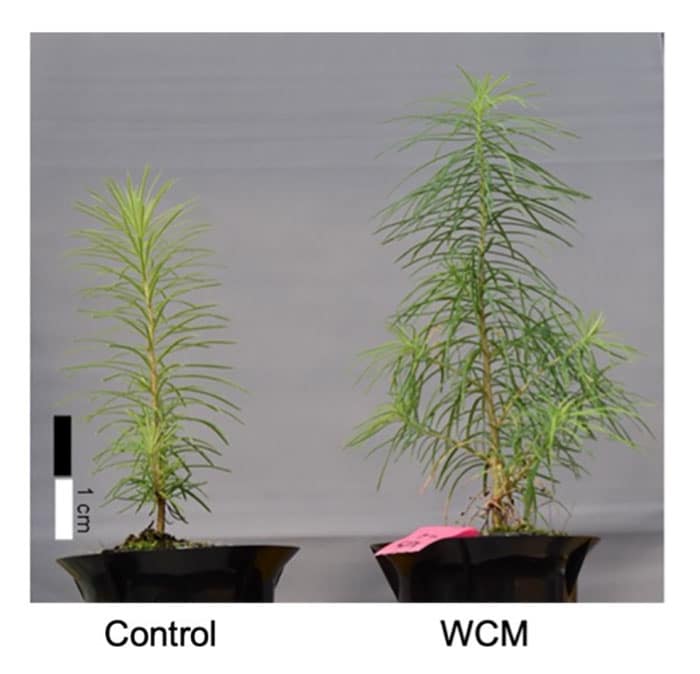A team of researchers from Hokkaido University’s Engineering and Agriculture departments and the Institute for Chemical Reaction Design and Discovery (WPI-ICReDD) has developed a europium-based thin-film coating that they demonstrated accelerates both vegetal plant and tree growth. The technology can improve plant production speed and has the potential to help address the global food supply.
Plants require the red and blue light that are part of the visible white light produced by the sun to grow big and strong. In addition to visible light, sunlight also contains ultraviolet (UV) light, but the overall consensus is that UV light is not necessary for plant growth.
In their study, researchers aimed to provide plants with additional visible light to use in photosynthesis by employing a wavelength-converting material (WCM) that can convert UV light into red light.
The WCM film consists of commercially available plastic sheeting that has been coated with a thin layer of a rare-earth metal known as europium. The films convert UV light to red and do not block any of the beneficial visible light from the sun.

The film was then tested by comparing plant growth using sheets with and without the WCM coating. In the summer, when the days were longer, and the sunlight was brighter, no significant difference was observed for Swiss chard when using the WCM films. However, in winter, plants grown under the film developed more intensively. The plants showed 1.2 times greater plant height and 1.4 times greater biomass after 63 days.
Japanese larch seedlings grown under film also showed a higher relative growth rate in the initial 4 months of growth. At the end of the test, resulting in a stem diameter 1.2-fold larger and total biomass 1.4-fold larger than trees grown without the WCM coating. In addition, the new technology has allowed the seedlings to reach standard tree planting sizes in just one year rather than the usual two years.
The researchers hope that, among other applications, this technology could one day be used to increase food production in regions with cold climates where days are relatively short and the sunlight is relatively weak.
“By using a coating of wavelength-changing material, we were able to successfully create a transparent film and demonstrate its ability to accelerate plant growth,” said lead author Sunao Shoji. “By rationally designing the light-emitting ion, we can freely control the color of emitted light to be other colors like green or yellow, so we expect to be able to create wavelength-converting films that are optimized for different plant types. This opens a large avenue of future development for next-generation agricultural and forestry engineering.”
Journal reference:
- Sunao Shoji, Hideyuki Saito, Yutaka Jitsuyama, Kotono Tomita, Qiang Haoyang, Yukiho Sakurai, Yuhei Okazaki, Kota Aikawa, Yuki Konishi, Kensei Sasaki, Koji Fushimi, Yuichi Kitagawa, Takashi Suzuki and Yasuchika Hasegawa. Plant growth acceleration using a transparent Eu3+-painted UV-to-red conversion film. Scientific Reports volume 12, 17155 (2022); DOI: 10.1038/s41598-022-21427-6
Thin film accelerates plant growth by converting Sun’s UV light to red light
Source: Tambay News

0 Comments